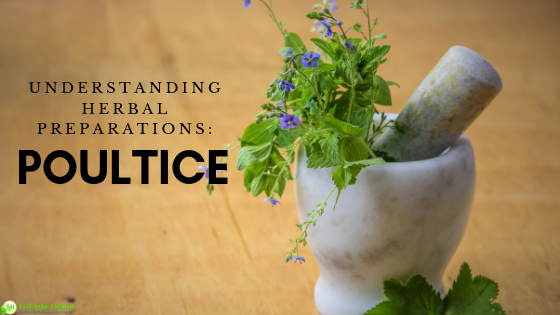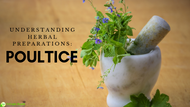Understanding Herbal Preparations: Poultice
Posted by TriLight Health on Mar 28th 2019
In the world of herbalism, you will definitely expand your vocabulary! Scientific names of herbs, herb actions, and herb preparations are all new words to learn. It can feel overwhelming to try learning all the terms. That’s why we are here to help. In the coming weeks, we’ll be unpacking and explaining some of these different herbalism terms for you. Today we’ll start with an herbal poultice. We’ll provide basic information so you can dive in and learn more on your own if interested.

What is an Herbal Poultice?
Most likely you know what an herbal tea is. Since you’re reading our blog, you also most likely know what an herbal glycerite is (if not, don’t worry- we’ll get to it!) The word “poultice” may be a new to you. It’s a unique herbal preparation in that it is one used topically, not internally as with most herbs.
A poultice can be made from herbs only. It can also be made from activated charcoal, salts, clay, or other materials. Onion and garlic are often used as a poultice as well. In survival situations, or even in the backyard, a poultice is often made from common weeds such as plantain. Sometimes the weed is quickly mashed up with some water and applied to the area (or even chewed). The desired poultice components are mixed together and placed in a cloth. This cloth is them used topically. Sometimes the poultice is applied directly to the skin and covered with cloth or even a thin layer of plastic.
How is a Poultice Used?
A poultice may be used short-term or long term. For long-term use, the poultice is often gently warmed first. It will then be covered with fabric and often plastic wrap. Covering the poultice helps it maintain its heat and hold onto body heat. The poultice will then be changed out every few hours- sometimes even overnight. A short-term poultice may also be covered up.
A poultice is traditionally used for things such as:
- Bites
- Stings
- Burns
- Splinters
- Skin Infection
- Bruises
- Warts
- Cough
- Cold
- Respiratory Illness
- And even more
An herbal poultice is quick and easy to prepare. Sometime people keep common ingredients and poultice blends on hand. A ready-to-grab poultice kit is found in many people’s home apothecaries. This way when a poultice is needed, it can be made up quickly. A poultice can be an excellent tool to know how to make in the home or while in nature.
As always, consult with a trusted healthcare professional before making an herbal poultice.
TriLight Health employees are not licensed practitioners and cannot prescribe which products you should use. Our comments are educational. If you are pregnant or breast-feeding, please see our pregnancy safe section. As with all our formulas, especially if you are pregnant or breast-feeding, please consult your health care practitioner before using products with any other medications. *Disclaimer: These statements have not been evaluated by the FDA. These products are not intended to diagnose, treat, cure or prevent any disease.





